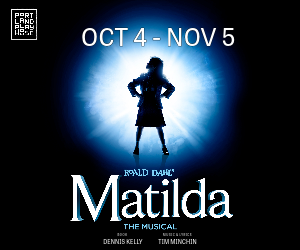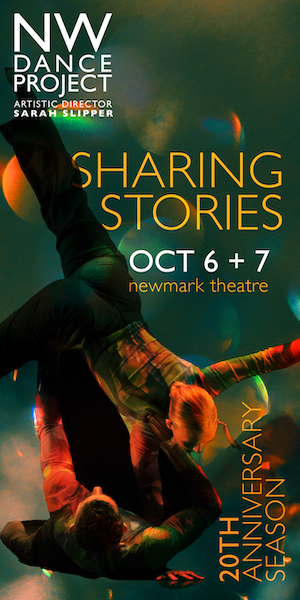
If the jaw-dropping spectacle of the latest Mission: Impossible film wasn’t enough to get mass audiences back in theaters, I’m not sure anything will be. But here goes anyway: Christopher Nolan’s Oppenheimer is big-screen filmmaking of the highest order, captivating in its visual language, its sonic landscape, its stunning lead performance, and its intellectual rigor. Every single one of these aspects can only be properly appreciated in the most immersive environment available. Get thee to an IMAX, or even better, a 70mm screening, and settle in for three hours of a director at the top of his game.
Oppenheimer is based on the authoritative biography American Prometheus by Kai Bird and Martin Sherwin. And Nolan takes that mythic metaphor about as far as it can go without depicting government lawyers literally pecking out Oppenheimer’s liver on screen. The broad arc is familiar enough (or should be—more on that later): Reluctantly drafted into the Manhattan Project, physicist J. Robert Oppenheimer oversees the birth of the atomic bomb and is hailed as a scientific hero, but becomes haunted by what he has unleashed upon the world and is later tarred as a security threat due to his left-wing politics.
This being a Nolan joint, however, things unfold in a decidedly nonlinear fashion. At one point we’re in 1936 California, where Oppenheimer (Cillian Murphy) meets Communist psychologist Jean Tatlock (a barely recognizable Florence Pugh) and they have a torrid affair. At another, it’s 1954, and a private hearing is being held to determine whether to renew Oppenheimer’s security clearance. In 1959, Atomic Energy Commission head Lewis Strauss (Robert Downey, Jr.) faces a contentious hearing over his nomination to be President Eisenhower’s Secretary of Commerce. And, of course, the movie spends a fair amount of time chronicling the work of Oppenheimer (and so many others) at Los Alamos, harnessing the primal force of the universe and creating the most destructive weapon the world had ever known.
Shifting masterfully between these times, Nolan uses a different color palette for each. The Senate hearings are in high-contrast black-and-white, as they would have appeared on TV. The 1930s scenes are warmly but subtly colored, while New Mexico in the 40s is drab and washed-out. Nolan has stated that Oppenheimer doesn’t have a single CGI shot, and that fact is evident in the depth of field and level of detail captured by his camera.
Besides, who needs digital trickery when you have Cillian Murphy’s endlessly fascinating visage? A vivid reminder that the best special effect in movies remains the human face, his performance marks a well-deserved career peak and makes him the front-runner for an Oscar next year (assuming there are Oscars next year). Captured in one massive close-up after another, Murphy channels Oppenheimer’s intensity, intelligence, and eventual disillusionment with almost spooky precision.
The rest of the vast, bold-face-named cast fills in around him nicely. It’s nice to see Downey act his age as the weathered, gray-haired Strauss (who was only five years older at the time of the Senate hearings than Downey is now), and you can tell that he’s enjoying his freedom from Marvel’s iron shackles. Matt Damon as General Leslie Groves, Oppenheimer’s superior officer at Los Alamos, may seem counterintuitive, but he brings earthiness and humor that the film desperately needs. His conversational sparring with the stubborn physicist makes for some of Oppenheimer’s best moments. Matthew Modine (who should call dibs on playing Joe Biden in the eventual biopic) is Vannevar Bush, the head of military scientific research during WWII. Benny Safdie is Edward Teller, the Hungarian-born proponent of the hydrogen bomb who was a fierce rival to Oppenheimer (and pretty much a jerk to everyone).
In fact, for a viewer with previous knowledge of the Manhattan Project or 20th-century physics, Oppenheimer is an enjoyable “Where’s Waldo?” experience. Look, it’s Werner Heisenberg (Matthias Schweighöfer)! And Edward Lawrence (Josh Hartnett), namesake of the Lawrence Livermore National Laboratory! There’s Richard Feynman (Jack Quaid, aka Huey in The Boys)!
My favorite such cameo is James Urbaniak as Kurt Gödel, the eccentric mathematician whom we glimpse during one of his fabled walks in the woods near Princeton with Albert Einstein (Tom Conti). Oh, and Kenneth Branagh is Niels Bohr. If there’s another movie with more Nobel Prize winners as characters, I’d be surprised.
Nolan, on the other hand, has never had a knack for creating or depicting interesting female characters. As forgivable as that can be in a story set in such a male-dominated historical era and realm, it still stands out that the only three significant women in Oppenheimer are the aforementioned Tatlock, a doomed manic pixie dream girl of sorts; Oppenheimer’s wife Kitty (Emily Blunt is given very little to do); and Lilli Hornig (Olivia Thirlby), one of the few women scientists at Los Alamos, who gets maybe four lines of dialogue.
The script was reportedly written in first-person, and the movie never strays from its protagonist’s immediate perspective. For instance, he doesn’t witness the dropping of the bombs on Hiroshima and Nagasaki, so neither do we. (The only big boom on screen is the first test at Alamogordo, which is stunningly rendered.) This helps to explain why there isn’t a more visceral depiction (outside of one Oppenheimer imagines) of the horrific effects of nuclear explosions, and why those victims do not have a voice. But it does give everything a slightly hermetic, narcissistic aura.
Still, for a movie that features long scenes with middle-aged white guys in suits having intense conversations in rooms, Oppenheimer proves as riveting as any thriller and as awe-inspiring as any action flick. Plus, with any luck, it will introduce aspects of history (Red Scare tactics, the morality of scientific research, the promise and peril of turning theory into practice) that remain vital to audiences who have had little previous exposure to them.
Oh, I almost forgot: Gary Oldman plays Harry Truman.
(Opens Thursday, July 20, at theaters everywhere. The Hollywood Theatre will be screening it in 70mm, while Cinemagic and Cinema 21 will be screening it in 35mm.)
ALSO THIS WEEK:
Barbie: The other half of the “Barbenheimer” (or is it “Oppenbarbie”?) meme also hits screens everywhere, with director Greta Gerwig offering a reportedly subversive take on the famed plastic plaything (Margot Robbie) and her vapid boy toy Ken (Ryan Gosling). Unfortunately, the film wasn’t screened for critics in Portland.
Desperate Souls, Dark City and the Making of Midnight Cowboy: The first and only X-rated feature to win a Best Picture Oscar, director John Schlesinger’s gritty story about a country boy turned gigolo (Jon Voight) and the dysfunctional loner (Dustin Hoffman) he befriends is a landmark in cinema history. This meditation on its creation, directed by Nancy Buirski, features interviews with Voight, co-star Bob Balaban, screenwriter Waldo Salt’s daughter Jennifer, and others (but not Hoffman). Unfortunately, other than praising Schlesinger’s bravery and candor as a filmmaker, there isn’t much insight into exactly what made Midnight Cowboy so influential. Buirski allows the film to become a wide-angled discursion into the tumultuous atmosphere of the 1960s, the history of gay representation in films, and other broad topics that have been covered with more perception and detail many other places. And the evolution of Voight’s politics in recent decades, which seem relevant to a discussion of such an envelope-pushing film, are never touched on. (Opens Friday, July 21, at Living Room Theaters.)
Lone Wolf and Cub: The six films in the Lone Wolf and Cub series have captivated fans of wide-screen, violent swordplay since their initial release between 1972 and 1974. A perfect introduction to the chambara genre, it follows the travels of a widowed, disgraced executioner and his three-year-old son through the landscape of Edo period Japan. Each installment features enough over-the-top mayhem and dry wit to satisfy the most demanding samurai movie fan. They’ll screen over the next three weeks, starting with 1972’s Lone Wolf and Cub: Sword of Vengeance. (Hollywood Theatre, Saturday and Wednesday)
Hana-Bi Japanese Film Festival: If Lone Wolf and Cub doesn’t sate your yen for Japanese cinema (and why should it?), the Clinton Street Theater kicks off its own two-week celebration of the country’s diverse film culture, from disturbing cyberpunk dystopias to the elegiac dramas of Yasujiro Ozu. This week’s offerings are the unforgettable Tetsuo: The Iron Man from 1989 on Monday and Kenji Mizoguchi’s acclaimed 1953 ghost story Ugetsu on Thursday. (Continues through August 7, Clinton Street Theater)
The Complete Works of Wes Anderson: This series kicks off with 2021’s The French Dispatch and will continue showcasing one of the auteur’s works each week through September. (Eugene Art House)
The Satirical Films of Tim Smith: The creator of 1972’s Drugs: Killers and Dillers and other short 16mm efforts shot in 1970s Portland, some featuring Smith’s pal Matt Groening, will be in attendance for a screening of his oeuvre. Presented by the Oregon Historical Society. (Tuesday, Hollywood Theatre)
FRIDAY: Ken Russell’s Altered States (Clinton St.); Taikia Waititi’s acclaimed second feature, 2010’s Boy (5th Avenue Cinema, through Sunday); Mondo Trasho presents 1985’s Ninja III: The Domination
SATURDAY: Eliot Lavine introduces Robert Rossen’s The Hustler (11:00 a.m., Cinema 21)
SUNDAY: Mel Brooks’s Blazing Saddles (Living Room Theaters, FREE on Sunday afternoon); Synth Project Portland presents the new documentary Nam June Paik: Moon Is the Oldest TV, a portrait of the pioneering video artist (Hollywood); director Houston K. Hughes presents the Eugene premiere of his latest feature, The Shallow Abyss (Eugene Art House)
MONDAY: Sonic Cinema presents The Cramps and the Mutants: The Napa State Tapes, a video recording of the infamous 1978 punk concert held at a California mental hospital (Hollywood)
TUESDAY: Dean Martin and Jerry Lewis in 1950’s At War with the Army (Darkside Cinema in Corvallis); The Portland Psychedelic Society presents the documentary Fantastic Fungi (Clinton St.)
WEDNESDAY: Church of Film presents the 1991 Japanese drama Chizogu’s Younger Sister, from the director of the cult classic Hausu (Clinton St.)
THURSDAY: Director Jumana Manna’s documentary Foragers captures the culture of wild plant foraging practiced in Israel and Palestine (Hollywood)
AT HOME:
The League: We’ve all heard of the Negro Leagues of baseball, and even non-fanatics may know the names of some of its biggest stars: Satchel Paige, Josh Gibson, Buck O’Neil. But director Sam Pollard, whose previous documentary subjects have included Sammy Davis, Jr., Bill Russell, and Arthur Ashe, has made the definitive nonfiction treatment of this shameful yet empowering chapter of American sports history. Chock full of fascinating facts, potent interviews (including Maya Angelou!), and priceless footage of the teams and their fans in action, it provides social and historical context while incorporating the personal stories of those who were there. For instance, it had never occurred to me that one of the reasons the Negro Leagues took hold primarily in the Midwest and Northeast (apart from The Great Migration itself) was the ready availability of non-segregated public transportation allowing Black fans to get to the ballpark. Important viewing. (Available to rent or purchase on various platforms.)
The Cow Who Sang a Song into the Future: A woman emerges from a river whose banks are clogged with dead fish. Another woman is summoned back to her southern hometown after her father suffers a heart attack, bringing her trans teenager with her. It emerges that the first woman is the returned-from-the-dead mother of the second, a situation which is treated with the hesitant acceptance of the magical realism tradition in which Chilean director Francisca Alegria works. Lyrically intertwining humanity’s need to evolve its approach to the natural environment with its need to increase empathy for those around is, it’s a unique and engaging fable. (Available to borrow via Hoopla, to rent via major platforms, and on DVD.)
Tori and Lokita: The latest film from Jean-Pierre and Luc Dardenne is a typically poignant, realistic tale about two young African immigrants trying to survive on the streets of Brussels. I reviewed it back in April when it played Portland, and now it’s streaming on the Criterion Channel.



























One Response
My cousin’s wife was born and raised near Alamogordo, NM. The residents of that area are still fighting for recognition and reparations from the damage that the bomb test inflicted on the residents and their descendants.